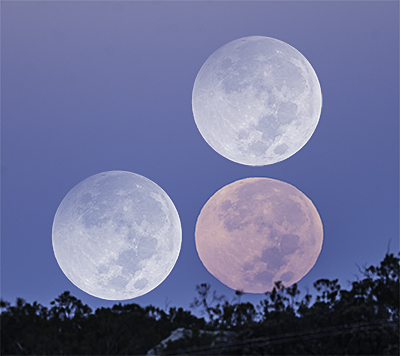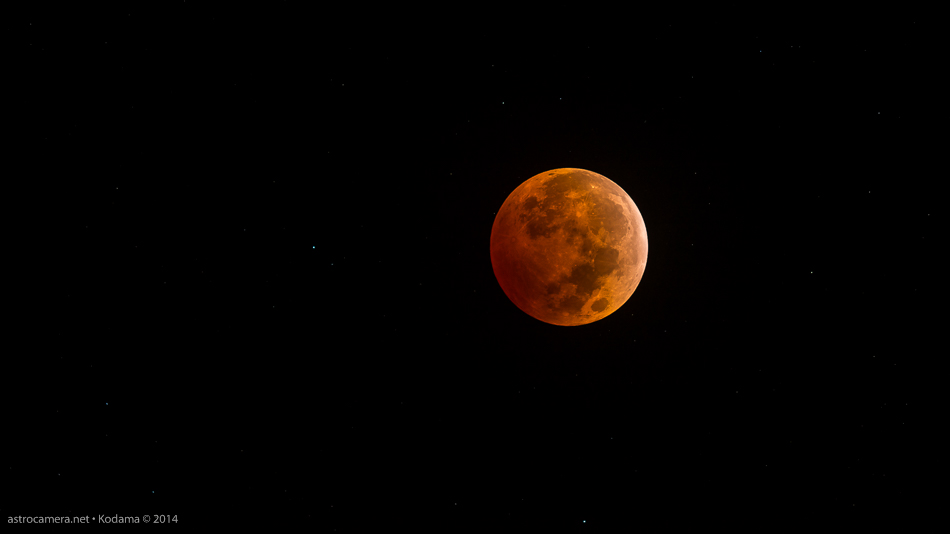
|

|
Lunar Eclipse - 08 Oct. 2014 |
October's total lunar eclipse at mid-totality. The green-colored "star" to the left of the moon is the planet Uranus. Click on the photo to see an enlarged version.
A time-lapse video of the entire
eclipse
 (umbral phase) can be seen on YouTube. For best viewing, watch it in HD, full screen.
During totality you will see the moon moving through the field of stars and nearby Uranus. During the
course of the eclipse, the camera exposure changes from 1/250 sec. to 2 seconds. In creating the video,
This 500:1 change in exposure caused a lot of complication, but I've tried to adjust the exposure
gradually during the video in an attempt to more closely match what my eye sees visually (through a
telescope).
(umbral phase) can be seen on YouTube. For best viewing, watch it in HD, full screen.
During totality you will see the moon moving through the field of stars and nearby Uranus. During the
course of the eclipse, the camera exposure changes from 1/250 sec. to 2 seconds. In creating the video,
This 500:1 change in exposure caused a lot of complication, but I've tried to adjust the exposure
gradually during the video in an attempt to more closely match what my eye sees visually (through a
telescope).

... Setting moon size comparison.
Visually, the moon appeared to be brighter and less reddened compared to the April eclipse, though part of that could have been due to the fact that conditions were not as good for me in April. Also, the edge of the umbral part of the shadow appeared to be more distinct to me in the latest eclipse. Uranus was invisible to me until totality, even though I looked for it with binoculars. That's partially due to atmospheric scattering of light from the moon, and partly due to the fact the bright moon was not allowing my eye to adapt to more sensitive night viewing.
The video continues past the end of totality until moonset at sunrise. You'll be able to see the moon turn into its characteristic golden color as we view it through the thicker air near the horizon until it becomes reddened like the setting sun. You'll also see it flatten out as it sets. Incidentally, it does not get any bigger near the horizon even though that might be your impression. In fact it actually appears smaller since atmospheric refraction flattens it out, but keeps the same width. You can see this clearly in the image at right, where I've added two copies of the moon (taken higher up in the sky just as the eclipse starts) to the photo with the setting moon.
Incidentally, if you see an image on the internet with the moon right on the horizon and it is perfectly round, now you know that is a composite photo and not a true photo of the setting or rising moon!
